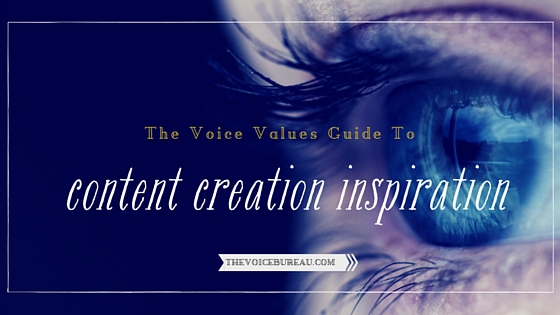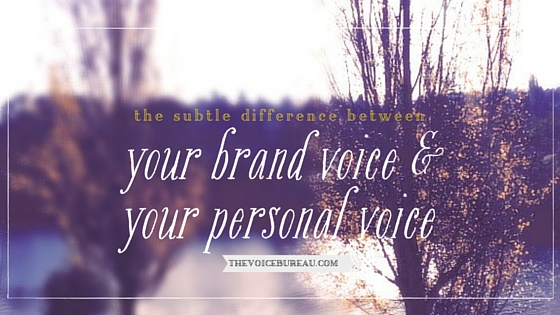By now, if you’re a regular reader of this blog, you’ve probably taken our complementary Discover Your Voice Values self-assessment.
Haven’t taken it yet? 48 questions, about 10 minutes of your time, and you’ll self-score your way to clarity on what’s naturally powerful about the way you tweet, Facebook, write blog posts, and email your list.
You’ll also learn a bit about why certain people are drawn to you and what you should watch out for as you grow your brand.
Enter your best email address below and click Go to get started.
I thought it would be fun to provide a (sometimes humorous) rundown of what the 16 Voice Values think, do, and say in action. (If you’re curious about what my own top Voice Values are, I share them here.)
The scenario: You’ve just had a huge flash of an idea for your business. We’ll call it Idea X. Based on your Top 3-5 Voice Values (see below), you’ll probably respond like this . . .
Accuracy
THINKS: Wait a minute. Slow down. Let’s chart a course here. I don’t want to miss anything.
DOES: Opens your favorite of three mindmapping tools and begins a new project.
SAYS/TWEETS/FACEBOOKS: Absolutely nothing — until all the details are sorted out, checked, double checked, and ready to go. Or: “Looking for resources around Idea X. Who else has information, studies, knowledge?”
Audacity
THINKS: F*ck yes, this is it! This is bad ass. Can’t wait to launch this baby next week.
DOES: Immediately gets to work writing the sales page. The sooner you can get this baby up and out the door, the better.
SAYS/TWEETS/FACEBOOKS: “Coming VERY soon: possibly the very best idea I’ve ever had. It’ll rock your socks.”
Clarity
THINKS: This is the beginning of something amazing. I need to fill in the details. It’ll be a while until I’m ready to go public with this.
DOES: Opens a fresh doc and starts typing like the wind. You need to write your way into knowing what you think.
SAYS/TWEETS/FACEBOOKS: “In process. In flow. Illuminating. Clarifying.”
Community
THINKS: Ooh, my people would really come together around this! How can I get others involved? A forum? A Google Community? Small Mastermind groups that meet bi-weekly over Skype video?
DOES: Immediately Facebook messages your community sharing the idea in one line and requesting feedback.
SAYS/TWEETS/FACEBOOKS: “Would you be interested in working alongside your peers and colleagues around Idea X?”
Depth
THINKS: I’ve scratched the surface of something here. I wonder what else is beneath this idea.
DOES: Log the idea in a Google Doc (along with a hundred other ideas that have yet to be mined) and breathe a sigh of relief, knowing you can return to it as soon as more layers unearth themselves. And they will. They always do.
SAYS/TWEETS/FACEBOOKS: “Contemplating our relationship, as humans, to Idea X.”
Enthusiasm
THINKS: Oh my gosh, this is what I’m meant to do! This is the lightning bolt I’ve been waiting for! This is where my business is supposed to go.
DOES: Creates a new Pinterest board called “My Vision for Idea X.”
SAYS/TWEETS/FACEBOOKS: “I dreamt a little dream, and it’s all coming together now. Stay tuned!”
Excellence
THINKS: Perfect. Peeeeeeeeeeerrrrrrrrrrrrfeeeeeeeeeeeect.
DOES: Carefully outline the idea, making sure not to lose any of the details.
SAYS/TWEETS/FACEBOOKS: “On such-and-such a date –” [which you will hold yourself to or die trying] ” — “I’ll roll out the latest and greatest creation from My Business Name. If Idea X is important to you, you’ll want to pay attention.”
Helpfulness
THINKS: Who could really use this?
DOES: Makes a list of people and businesses who could benefit from Idea X. Then creates a landing page with an email opt-in to get people on a list for when the idea is ready to go. It’s never too early to start letting people know a solution is coming!
SAYS/TWEETS/FACEBOOKS: “If you’ve been challenged by Idea X, hang on. Relief is coming.”
Innovation
THINKS: OhmyGodIhopeI’mthefirstonetoeverthinkofthis.
DOES: Immediately runs an advanced Google Search for Idea X plus all related ideas, to see what else is out there. You need to know how your solution can be different and better.
SAYS/TWEETS/FACEBOOKS: “You thought you knew everything there was to know about Idea X. Just wait.”
Intimacy
THINKS: This feels really right. It’s like it’s been there all along. How could I not have noticed this before?
DOES: Meditates. You need to be alone with this idea, so you can expand into it and really see inside it. Probably let it see inside of you, too.
SAYS/TWEETS/FACEBOOKS: “Spent time in stillness with Idea X today. Focus is knowing.”
Legacy
THINKS: I wonder who else has done something like this before, and what I can learn from their work.
DOES: Thinks about how what you already know is connected to Idea X.
SAYS/TWEETS/FACEBOOKS: “If I were to create a new tool to help you create more Idea X in your life, what features would you want it to have?”
Love
THINKS: Swoon. Every new idea feels like falling in love. It’s like I’ve entered into a courtship with Idea X.
DOES: Gets a little hot and bothered, thinking about how happy the people you want to serve will be when they receive this. Idea X is a gift, really.
SAYS/TWEETS/FACEBOOKS: “Working on a prezzie for my people. I love you so.”
Playfulness
THINKS: Wheeeeeeee! This is going to be so. much. FUN!”
DOES: Creates a graphic of it in PhotoShop or collages it on Polyvore to help you understand it better. The more visuals, the better.
SAYS/TWEETS/FACEBOOKS: “Oh my gosh, you guys, I can’t wait to share Idea X with you. You’re going to have a ball!”
Power
THINKS: How can I quickly and confidently become a content authority on Idea X?
DOES: Hoard the idea and never mention it to anyone until you’re ready to go into pre-launch.
SAYS/TWEETS/FACEBOOKS: “It’s finally the right time to share my long-held expertise on Idea X with you.”
Security
THINKS: This is a really valuable idea. I need to hold onto my edge here.
DOES: Checks the U.S. Patent and Trademark Office site to see if Idea X is already claimed. Log the steps you’re taking to go about securing your claim to the idea.
SAYS/TWEETS/FACEBOOKS: Absolutely nothing until you’re sure the idea is free and clear and yours for the taking. No sudden moves!
Transparency
THINKS: Whoa. What an amazing opportunity to share my process with others.
DOES: Writes the first of a 20-part blog post series taking readers inside the workings of you creating and launching Idea X.
SAYS/TWEETS/FACEBOOKS: “An inside glimpse into the way I create and launch a great idea? Why, yes. I thought you’d enjoy that.”
Oh, you. What do you think?
In the comments, we’d love to hear:
Do your own top Voice Values in action resonate with you? Why or why not? How are you already drawing on your strongest Voice Values to help you shape a meaningful brand conversation with your Right People?
Looking forward to chatting with you!

 You don’t want there to be a difference between your brand voice & your personal voice, but there is.
You don’t want there to be a difference between your brand voice & your personal voice, but there is.

 Hello, you.
Hello, you.